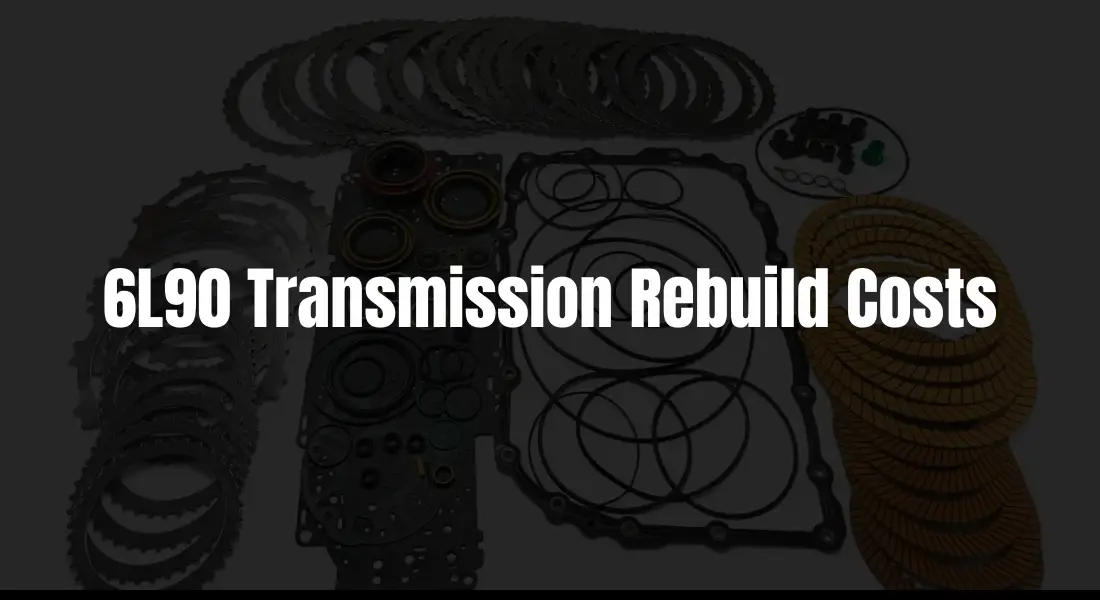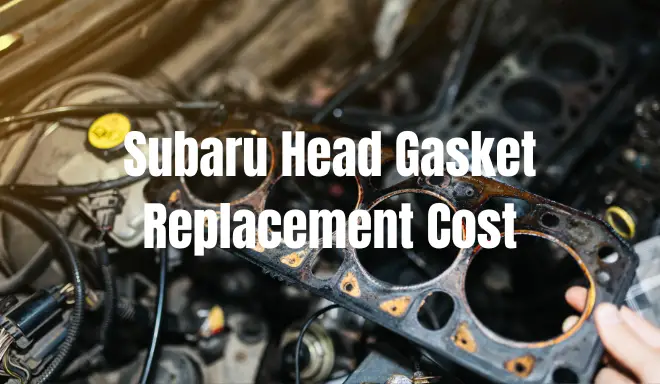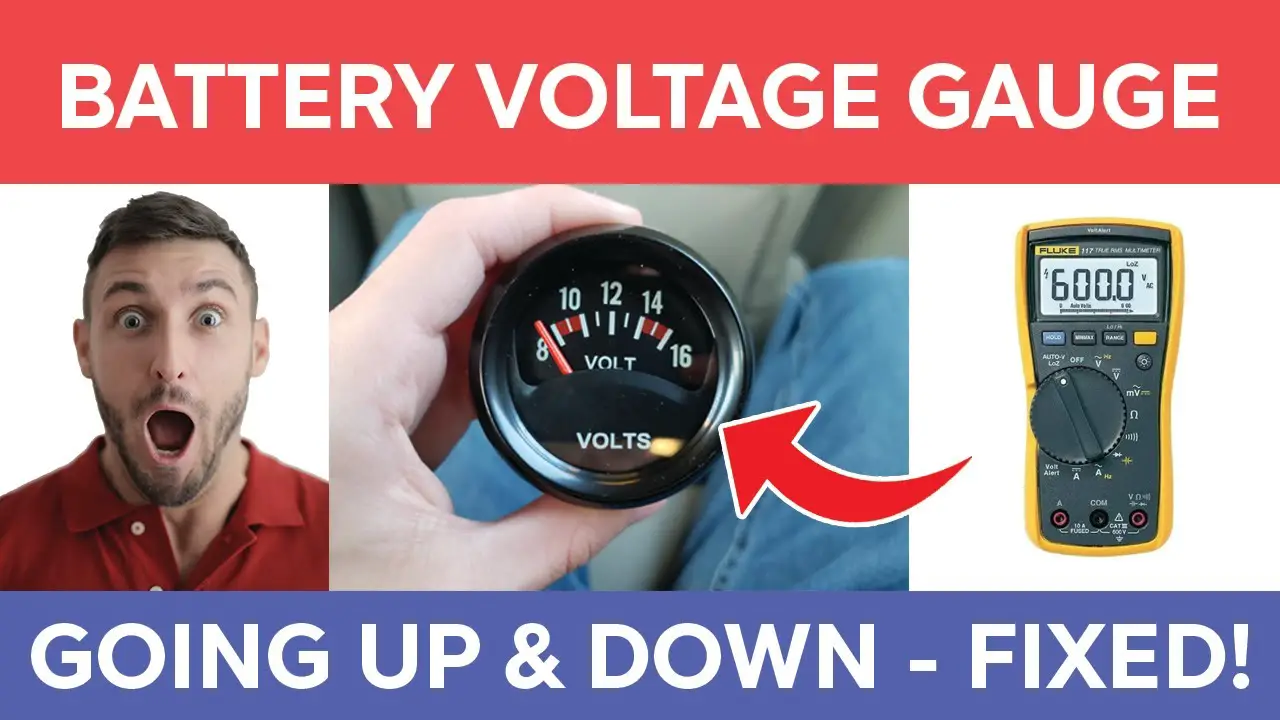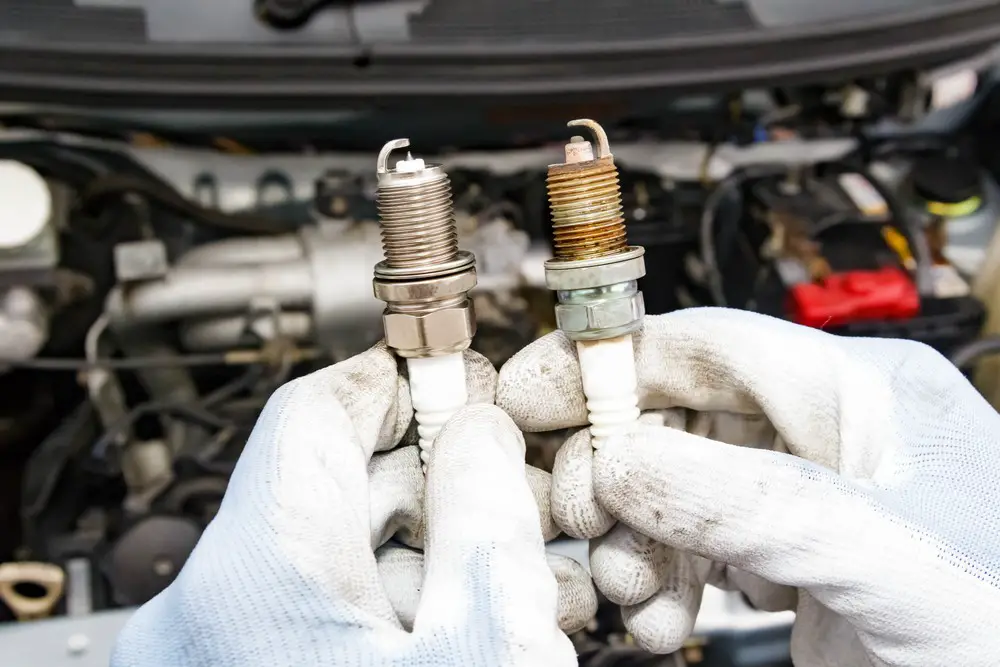If you own a vehicle with a 6L90 transmission, you may be wondering how much it would cost to rebuild it in case of a failure.
The 6L90 is a six-speed automatic transmission that is used in various models of Chevrolet, GMC, Cadillac, and Hummer vehicles.
It is designed to handle high torque and power, but it is not immune to problems.
Some of the common issues that can affect the 6L90 are poor cold weather performance, overheating, fluid leaks, valve body and clutch wear, and pump failure.
These problems can lead to reduced performance, shifting issues, and even complete breakdown of the transmission.
To avoid getting caught by surprise, you need to know the average 6l90 transmission rebuild cost and what factors can influence it.
In this article, we will explain what a transmission rebuild entails, how much it can cost, and how to find a reliable and affordable service provider.
What is a Transmission Rebuild and Why Do You Need It?
What is a Transmission Rebuild?
Imagine your car’s transmission as the conductor of an orchestra, coordinating the engine’s power and the wheels’ rotations. A transmission rebuild is akin to a complete overhaul of this conductor. It’s a complex process that involves:
- Disassembly: The transmission is removed from the vehicle and meticulously taken apart, piece by piece.
- Inspection: Each individual component is thoroughly examined for wear and tear, damage, or failure.
- Cleaning: All parts are meticulously cleaned to remove dirt, debris, and worn-out material.
- Replacement: Worn-out parts like clutches, bands, gaskets, and seals are replaced with new ones. In some cases, even components showing minimal wear might be replaced as a preventative measure.
- Reassembly: The transmission is painstakingly put back together, ensuring proper alignment and lubrication of all components.
- Testing: The rebuilt transmission is rigorously tested to ensure it functions smoothly and efficiently before being reinstalled in the vehicle.
Why Might You Need a Transmission Rebuild?
Several factors can necessitate a transmission rebuild:
- Extensive wear and tear: Over time, with prolonged use, transmission parts naturally wear down, leading to issues like slipping gears, grinding noises, and difficulty shifting.
- Severe damage: If your car experiences a significant event like overheating, collision, or towing a heavy load beyond its capacity, the transmission might sustain serious damage, necessitating a rebuild.
- Neglected maintenance: Failing to adhere to your vehicle’s recommended transmission fluid changes and services can accelerate wear and tear, potentially leading to the need for a rebuild sooner.
Signs You Might Need a Transmission Rebuild:
- Slipping gears: This occurs when the transmission struggles to engage a specific gear, causing the engine to rev without a corresponding increase in vehicle speed.
- Erratic shifting: The transmission hesitates or shifts abruptly between gears, making the driving experience unpleasant and potentially unsafe.
- Grinding noises: Unusual grinding sounds while shifting gears are a telltale sign of internal transmission wear or damage.
- Burning smell: A burning odor emanating from the transmission can indicate overheating, a serious issue requiring immediate attention.
- Difficulty engaging gears: The gear selector might feel stiff or unresponsive, making it difficult to change gears.
Important: ZF 8HP70 Transmission Problems: A Comprehensive Guide for Drivers and Technicians
How to Diagnose Common Problems with Your 6L90 Transmission?
1. Identifying the Symptoms
- Delayed or Harsh Shifting: Notice if shifts take longer than normal or if the transmission jolts noticeably between gears.
- Slipping: Does the engine rev up without the car accelerating at the same pace? This points to slipping gears.
- Leaking Fluid: Visually inspect underneath your car for reddish fluid leaks; these often mean there’s a seal or gasket failure.
- Strange Noises: Listen for grinding, whining, or clunking sounds during different driving conditions – these signal internal wear.
- Check Engine Light: If this light illuminates, especially with transmission-related codes, it’s a strong sign of a problem.
2. Basic Diagnostics
- Fluid Check: Look at the transmission dipstick (while the engine is running and warm). Low fluid or burnt-smelling fluid requires attention.
- Scan for Codes: An OBD-II scanner can reveal transmission-specific trouble codes, helping narrow down the problem.
3. Common 6L90 Issues and Diagnosis
- Torque Converter Failure: Symptoms include shuddering during acceleration, overheating, or slipping. Special tools might be needed for diagnosis.
- Solenoid Issues: Malfunctioning solenoids control shifting. This results in harsh shifts, delayed shifts, or getting stuck in a gear. Code scans and electrical tests help isolate faulty solenoids.
- Clutch Problems: Worn clutches slip, causing reduced power delivery, particularly in higher gears. Rebuild often required.
- Valve Body Failure: This component directs fluid within the transmission. Symptoms include erratic shifts or strange noises. Testing hydraulic pressures can point to a faulty valve body.
How Much Does a 6L90 Transmission Rebuild Cost on Average?
The average cost of a 6L90 transmission rebuild can vary depending on the extent of the damage, the quality of the parts and labor, and the location of the service provider. A professional rebuild of this transmission can cost anywhere from $1,500 to $2,500. However, this is only an estimate and the actual cost may be higher or lower depending on the specific needs of your vehicle.
Some factors that can affect the 6L90 transmission rebuild cost are:
- The condition of your transmission and the severity of the problems
- The availability and price of the replacement parts and fluids
- The type and level of warranty offered by the service provider
- The skill and experience of the technician performing the rebuild
- The location and reputation of the service provider
How to Find a Reliable and Affordable Transmission Rebuild Service Provider?
Finding a reliable and affordable transmission rebuild service provider can be challenging, but not impossible. Here are some tips to help you find the best option for your vehicle and budget:
You can use websites like Angie’s List, Consumer Reports, and Cartalk.com to look for information about local mechanics, compare prices, read reviews, and get estimates. You can also use websites like All Auto Part Store to find cheap rebuilt transmissions from different dealers.
-
Ask for recommendations
You can also ask your friends, family, coworkers, or neighbors for referrals. They may have had a good experience with a transmission rebuild service provider and can vouch for their quality and honesty. You can also check with your local Better Business Bureau or Chamber of Commerce for accredited businesses in your area.
-
Shop around
Don’t settle for the first quote you get. Contact at least three different service providers and compare their offers. Ask them about their warranty, parts, labor, and turnaround time. You can also negotiate the price and ask for discounts or coupons.
-
Check their credentials
Make sure the service provider you choose is licensed, insured, and certified. You can also check their ratings and complaints with the National Institute for Automotive Service Excellence (ASE), the Automatic Transmission Rebuilders Association (ATRA), or the Automotive Service Association (ASA).
-
Trust your instincts
Finally, choose a service provider that you feel comfortable and confident with. You should be able to communicate clearly with them, ask questions, and get honest answers. You should also inspect their facility, equipment, and staff, and look for signs of professionalism and cleanliness.
Is It Cheaper To Rebuild A 6L90 Transmission Or Buy A New One?

Rebuilding a transmission is cheaper than replacing it with a new one. However, this may not always be the case, especially if the transmission damage is severe or the vehicle is old and has a low value.
Here are some points to consider when making this decision:
Rebuilding a transmission involves disassembling, inspecting, cleaning, repairing, and reassembling the existing transmission with new or remanufactured parts. This can restore the transmission to its original performance and extend its lifespan.
Replacing a transmission involves removing the old transmission and installing a new or used one. This can ensure that the transmission is in optimal condition and has no defects or wear.
The cost of rebuilding or replacing a transmission can also depend on the make, model, and year of your vehicle, as well as the availability and demand of the parts and fluids. Some vehicles may have more complex or rare transmissions that are harder or more expensive to rebuild or replace. You should also factor in the cost of towing, diagnostics, and other fees that may be involved in the process.
The quality and warranty of the service provider can also affect the cost and value of rebuilding or replacing a transmission. You should look for a reputable and certified transmission specialist who can offer you a fair price, a high-quality service, and a good warranty. You should also compare different quotes and reviews from different service providers and look for discounts or coupons that may be available.
The depreciation and resale value of your vehicle can also influence your decision to rebuild or replace a transmission. If your vehicle is old, has high mileage, or has other problems, it may not be worth investing in a costly transmission repair or replacement. You may be better off selling or trading in your vehicle and buying a new or used one.
However, if your vehicle is relatively new, has low mileage, or has a high value, it may be worth keeping and repairing or replacing the transmission. You should also consider the future maintenance and repair costs of your vehicle and how long you plan to keep it.
What Are Some Common Mistakes To Avoid When Rebuilding A 6l90 Transmission?
1. Inadequate Cleaning and Inspection
- The Mistake: Not thoroughly cleaning components and failing to meticulously inspect every part for wear or damage. Even tiny debris can cause issues.
- How to Avoid:
- Ultrasonic Cleaning: Use an ultrasonic cleaner with the appropriate solution for deep cleaning of hard parts.
- Air Blow-Out: Blast out passages and crevices with compressed air.
- Visual Inspection: Examine every single part under good lighting, looking for cracks, wear, or any signs of damage.
2. Incorrect Clutch Clearances
- The Mistake: Setting clutch pack clearances outside of the specified tolerances, leading to premature wear, burnt clutches, or poor shift quality.
- How to Avoid:
- Precision Measurement: Use feeler gauges, a dial indicator, and other accurate tools to measure clearances.
- Specifications: Refer to the factory service manual for exact clutch clearance specifications for your specific 6L90 application.
3. Pump-Related Issues
- The Mistake: Ignoring wear in the pump body, pump slide, or gears. Damaged or worn pump components can cause low line pressure and various performance problems.
- How to Avoid:
- Pump Disassembly and Inspection: Take the pump apart and carefully examine slide surfaces, gear teeth, and the pump body. Replace components as needed.
- Boost Valve: Inspect the boost valve for wear and ensure it moves freely.
- Correct Pump Installation: Ensure the correct pump is used for the specific model year (there are variations).
4. Solenoid and Valve Body Problems
- The Mistake: Reusing old, potentially faulty solenoids or not thoroughly cleaning and inspecting the valve body.
- How to Avoid:
- Solenoid Testing: Test solenoids for proper resistance values and operation. If unsure, it’s often safer to replace them.
- Valve Body Cleaning: Meticulously clean all valve body passages and bores. Pay careful attention to check balls and ensure they seat correctly and are not damaged.
- Valve and Bore Inspection: Look for scoring on valves and in the valve body bores. Address this with a reamer kit or consider replacing the whole valve body.
5. Torque Converter Issues
- The Mistake: Neglecting the torque converter or installing a faulty one. Converter problems can lead to shudder, slippage, and burnt clutches.
- How to Avoid:
- Converter Flushing: Thoroughly flush out old fluid and debris.
- Cut and Inspect: Cut the old converter open to inspect for damaged internals and clutch material.
- Replacement or Rebuild: If damage is found, replace the converter or send it to a reputable shop for rebuilding.
Related Post: 8 Speed ZF Transmission Problems: A Comprehensive Guide!
Does a 6L90 transmission need to be programmed?
Yes, there are a few scenarios where a 6L90 transmission requires programming:
- New Transmission Installation: When installing a brand new 6L90 transmission, the Transmission Control Module (TCM) needs to be programmed with the vehicle’s specific information (VIN, tire size, etc.) to function correctly.
- TCM Replacement: If you replace the TCM with a new or used unit, it needs to be programmed to match your vehicle.
- Software Updates: General Motors may release software updates for the TCM to address bugs or improve shifting performance. These updates require programming the TCM.
- Shift Adaptations: Even if you install a used 6L90 from a similar vehicle, it’s highly recommended to reset shift adaptations in the TCM. This allows the transmission to “relearn” and optimize shifts based on your specific vehicle and driving style.
How to Program a 6L90 TCM
Programming a 6L90 TCM typically requires specialized diagnostic tools and software. Here are the common methods:
- Dealership: Your local GM dealership has the tools and expertise to program the TCM.
- Professional Transmission Shops: Many transmission shops have the necessary equipment and software to program 6L90 TCMs.
- Advanced Diagnostic Tools: Some high-end diagnostic tools (like those from Autel, Snap-On, etc.) have the capability to program GM TCMs.
How long will a rebuilt transmission last?
The lifespan of a rebuilt transmission isn’t a one-size-fits-all answer. It depends heavily on these factors:
Quality of the Rebuild
- Skill of the Technician: The experience and expertise of the person rebuilding the transmission play a huge role.
- Parts Used: High-quality parts will significantly outlast cheap replacements.
- Attention to Detail: Meticulous rebuilds with close adherence to specifications increase longevity.
Type of Driving
- Aggressive Driving: Hard acceleration, towing heavy loads, and racing puts increased stress on a transmission, shortening its lifespan.
- Gentle Driving: Smooth driving habits prolong transmission life.
Maintenance
- Regular Fluid and Filter Changes: Following the manufacturer’s recommended service intervals keeps the transmission lubricated and clean.
- Addressing Issues Quickly: Fixing minor problems early on prevents them from snowballing into major failures.
General Expectations
- Minimum: A poorly rebuilt transmission might start experiencing problems within 30,000 – 40,000 miles.
- Average: A well-done rebuild, with proper care, can last 100,000 to 200,000 miles, potentially even matching the lifespan of the original transmission.
Conclusion
While a 6L90 transmission rebuild can be a significant expense, costing between $1,500 and $2,500 on average, it is often much cheaper than a complete replacement.
By understanding the signs of a failing transmission, the factors affecting rebuild costs, and how to find a reliable service provider, you can make informed decisions about this crucial repair.
Remember, following recommended maintenance schedules and addressing minor issues promptly can significantly extend the lifespan of your 6L90 transmission and potentially save you money in the long run.




